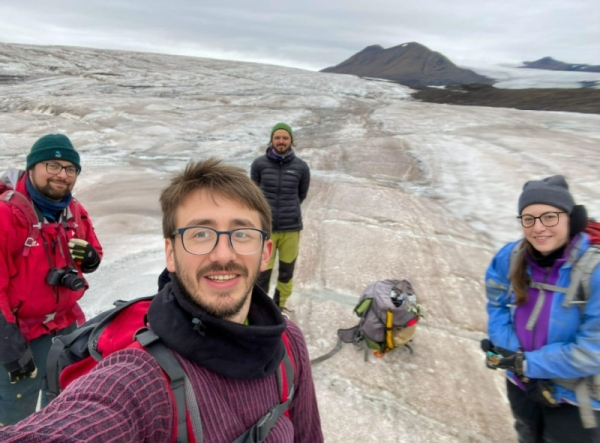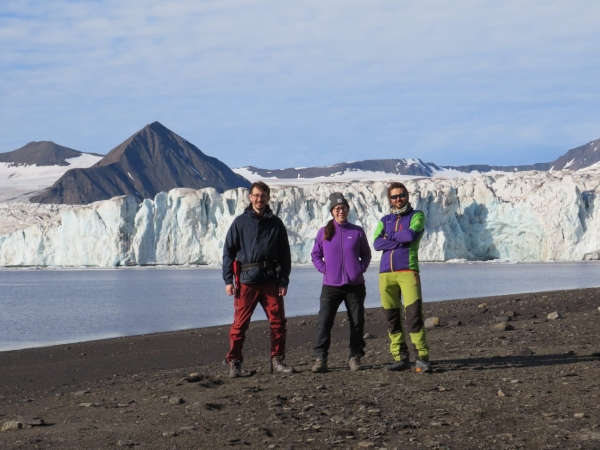Richard Hann (NTNU)
In 2023, SIOS brought together a team of researchers to study the dynamics of a glacier surge in Svalbard. Powered by the SIOS Access Call, the team accessed logistics at the Norwegian Polar Institute in Longyearbyen and started planning summer fieldwork. The objective was to conduct measurements on Borebreen, a tidewater glacier in Isfjorden that recently started surging. The goal was to improve the understanding leading to the unexpected surge and identify potential links to climate change. The team consists of early-career researchers from four different institutions and three countries applying in interdisciplinary approach. The team consists of William Harcourt (University of Aberdeen), with expertise in remote sensing, glaciology, and machine learning. Danni Pearce (NMBU) is a palaeo-glaciologist with expertise in geomorphology and glacier reconstructions, enabling us to understand past changes. Wojciech Gajek (IG PAS) is a seismologist with experience and expertise in environmental seismology and analysing subglacial processes from seismic data. Finally, Richard Hann (NTNU) is an experienced drone pilot in Svalbard and offered expertise in building 3D models of glacier calving fronts.
Between us, we combined complementary expertise in order to obtain detailed measurements of a glacier surge. The initial project has initiated a long-term collaboration focusing on Svalbard glacier change and the role of surging glaciers that has resulted in several subsequent successful funding applications. This demonstrates the success of the SIOS access program in bringing together interdisciplinary teams of researchers to understand key questions in Earth system science. We have brought together remote sensing, glaciology, drones, geophysics, and geomorphology to develop a holistic insight into the dynamics of the glacier surge.





























